Why does diabetes still have high blood sugar when you don't eat rice and potatoes?
Diabetics eat any food will be elevated blood sugar, that is, ordinary people are the same, only diabetic food to pay attention to a point, especially you mentioned the potatoes and sweet potatoes a class of food, diabetics can eat some, but must be when the main food, that is to say, eat potatoes to eat less staple food, to control blood sugar or to take medication, control the amount of food, insist on exercise!
Thanks for the invitation. Before answering this question it is important to understand what diabetes is all about. Diabetes is a disease in which blood sugar rises due to a decrease in the quantity or quality of insulin, the endocrine hormone that processes glucose. For people with diabetes, diet is extremely important in regulating blood sugar!
The main diet that can cause a sharp rise in blood sugar is carbohydrates. However, not all carbohydrates cause a rise in blood sugar. From a physiological point of view, carbohydrates can be divided into two categories: digestible and non-digestible. Carbohydrates that cannot be digested and absorbed are mainly oligosaccharides, dietary fiber, etc., and the intake of such sugars will not raise blood sugar. Absorbable sugars include monosaccharides such as glucose, fructose, galactose, disaccharides such as sucrose, lactose, maltose, etc. Polysaccharides are mainly starch, etc., and all of them, except for fructose, can cause elevation of blood glucose.
Knowing this about carbohydrates, it's not hard to answer your question. First of all, diabetics eat rice, which is extremely starchy, and starch breaks down into glucose in the intestines, and undoubtedly blood sugar rises after ingesting such food.
In looking at potatoes, the starch content of potatoes is significantly less than that of rice compared to rice, which contains about 20% starch, a significant portion of which is resistant starch, i.e. starch that is not absorbed. Studies have shown that raw potatoes contain up to 75% resistant starch, but when cooked contain just 3%, which can increase to 12% once cooled. However, raw potatoes should not be consumed because they contain lectins that are toxic to humans. The only resistant starch that can be beneficial is when the potatoes are properly cooled after being boiled.
Even so, the portion of starch that can be absorbed by potatoes is still quite high and is not harmful for ordinary people to consume. But for diabetics, such a starch content naturally leads to an increase in blood sugar. In other words, diabetics are not in favor of ingesting potatoes! In fact, in addition to potatoes, some starch-rich foods are not suitable for diabetics, such as yams, lotus root powder, sweet potatoes and so on. Welcome to my headline-Jiangsu Provincial Cancer Hospital Li Feng.
Why does diabetes still have high blood sugar when you don't eat rice and potatoes?
Don't take potatoes for dry food!
First of all, the protein of potato has high nutritional value, its quality is equivalent to the protein of egg, easy to digest, absorb, superior to the protein of other grain crops, and the protein of potato contains 18 kinds of amino acids, including the human body can not synthesize a variety of essential amino acids.
Secondly, potato tubers contain many vitamins and inorganic salts, which are indispensable elements for human health and the development and growth of young children.
Again, potato tubers are rich in dietary fiber, so the gastrointestinal absorption of potatoes is slower, after consuming potatoes, stays in the intestines much longer than rice and other staple foods, more satiated, but also help take away some of the garbage and grease, with a certain laxative and detoxification effect.
Chinese food culture is profound, a small potato can also conjure up a variety of delicious dishes, such as spicy potato, vinegar potato, mashed potatoes, stewed potatoes, etc., diabetic patients can eat potatoes, but it is not desirable to eat too much, to control the intake of potatoes, and even more importantly, to reduce the staple food, if you eat too many potatoes, of course, will cause an increase in blood sugar.
Because, potatoes are rich in starch, starch is a very important source of energy and the most common carbohydrates, after the intake of potatoes, these starches in the body will be converted into glucose, which in turn raise blood sugar, eating potatoes is equivalent to eating staple food, the same as eating rice, so diabetic patients should keep in mind, don't take the potatoes as a dry food!
We should pay attention to, the potato as a dish should be appropriate to reduce the main food, the average is 100g of potatoes, the equivalent of 25g of refined rice and flour amount of carbohydrates, such as the patient ate 100g of fried potato shreds for lunch, you have to reduce the 25g of staple food, at the same time, as little as possible with frying potatoes cooking methods, you can try to fry the potato slices, shredded potatoes, preferably cooled, which will have a relatively low impact on blood glucose, and also , you can eat potatoes and dietary fiber-rich foods together, such as celery, will also reduce the glycemic index of potatoes.
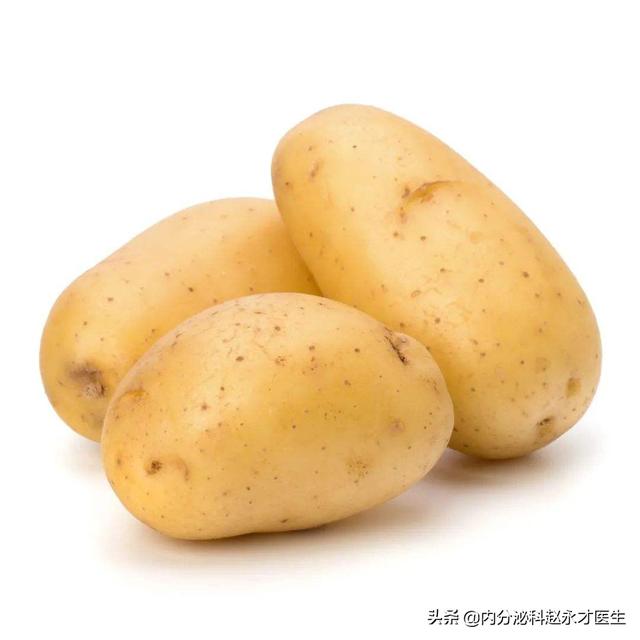

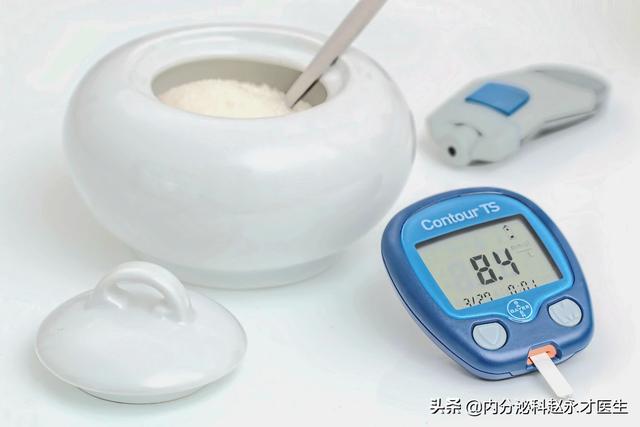
Healthy eating is about balanced nutrition. The dietary requirements of diabetic friends are relatively strict, and they also have to control a certain amount of calories. Therefore, the requirements for food choices are more than those for non-diabetic friends.
Potatoes are mandated by the World Food Program as one of the staple foods, so eating potatoes in place of rice is perfectly fine.
For example, 25g of rice, 25g of flour and 100g of potatoes contain similar calories, about 90 kcal calories, think about it, eat half a couple of flour made of food per meal, and eat 100g of potatoes compared to which one of the feeling of satiety is stronger. If you want to achieve the same feeling of satiety, you need to eat more flour-based food, then how much blood sugar will rise.
Not to mention that potatoes are also rich in dietary fiber, these dietary fibers in the increase of satiety at the same time, but also slow down the absorption of food in the digestive tract, slowing down the rise of blood sugar, but also improve constipation, reduce intestinal disorders.
That's why potatoes are something I always advocate for diabetics to eat as a staple.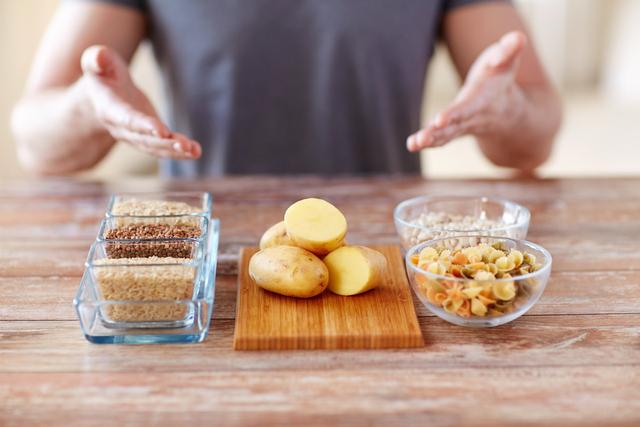
But I stopped eating rice and potatoes, and my blood sugar is still high. Gay brother ah! You eat into the staple food, is to provide calories, to use as the body's life activities of energy, potatoes are not hypoglycemic drugs, of course, will still raise blood sugar.
If you are able to choose the staple foods you eat and exercise according to your body type and activity intensity, but your blood sugar is still high, it is important to see if your treatment plan is appropriate.
If postprandial blood glucose is high, it is recommended to eat food in the order of vegetables, meat and eggs, and staple food, together with drugs such as metformin, acarbose, and rapid-acting insulin to reduce postprandial blood glucose. If fasting blood sugar is high, then observe if there is hypoglycemia at night, or dawn phenomenon, then the medication should be reduced or increased according to different situations.
To summarize: food plays a very important role in the control of diabetic blood sugar, but you can not rely solely on food to reduce blood sugar, the time to use drugs or need to adjust the drug must be actively adjusted.
I'm Dr. Sun, pay attention to Dr. Sun talk about sugar, continue to learn more quality health knowledge, help please like, have questions please leave a message, will reply!
First of all, we need to know what staple food is. Generally speaking, a staple food is a food that has carbohydrates as its main nutrient. Why? Because under normal circumstances, most people's dietary structure, the proportion of carbohydrate energy supply is more than 50%, so carbohydrate-rich foods are called staple foods. Even in Europe and the United States, where meat is eaten more often, grains and potatoes make up half of the foods recommended by the Dietary Guidelines.
In our daily life, we have been accustomed to rice slim buns and other food as the main food, potatoes and sweet potatoes are generally used as vegetables. Some articles suggest that diabetics do not eat rice and noodles, should eat potatoes and sweet potatoes, that can play a role in lowering blood sugar. This can really lower blood sugar?
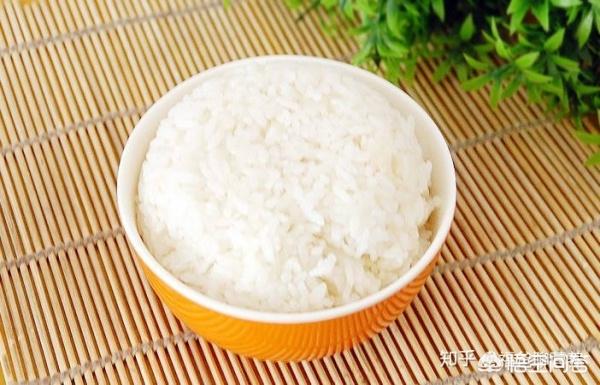
In Chinese daily life, many people conceptualize staple foods as rice and pasta, but also other grains such as corn, oats, buckwheat, quinoa, etc. As for potatoes and sweet potatoes, as well as taro, yams and other root foods, they are eaten as vegetables. Potatoes and sweet potatoes, as well as taro, yams and other roots and tubers, are eaten as vegetables. For example, shredded potatoes with green pepper, pulled yam, and braised taro are all favorite home-cooked dishes.
But from a nutritional point of view, both potatoes and sweet potatoes are foods with starch as the main nutrient, and according to the definition of staple food, they should also be treated as staple food. There are also foods such as yams and taro that should be treated as staple foods. Especially for people with diabetes, these foods are good substitutes for staple foods when making recipes. In layman's terms, if you eat shredded potatoes with green peppers, then rice or noodles should be reduced a little accordingly.
So how does replacing rice and noodles with potatoes and sweet potatoes affect your blood sugar?
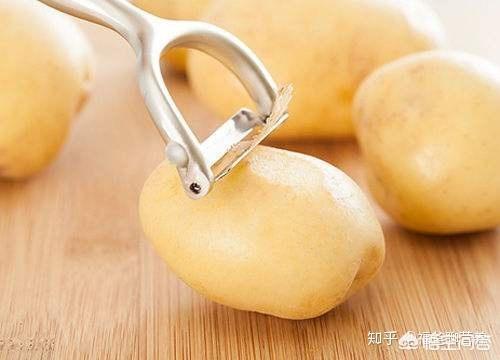
If you want to make a categorization of staple foods, they can be divided into two categories: fine staples and coarse grains and beans.
We usually eat every day white rice, white porridge, white bread and noodles, white bread, etc., belong to the fine staple food. Fine staple food is characterized by the deep processing of grains, the nutritional composition of starch accounts for the vast majority, vitamins, minerals, dietary fiber is very little.
Coarse grains and mixed grains and beans are just the opposite, with low processing, and in addition to starch, they are rich in dietary fiber, many vitamins and minerals, and a huge variety of beneficial plant compounds, such as flavonoids, carotenoids, anthocyanins, and so on.
It can be seen that the nutritional value of coarse grains mixed grains mixed beans is much higher than that of white rice white flour steamed buns noodles and other fine staple foods. Moreover, because coarse grains and miscellaneous beans are rich in dietary fiber, slowing down the speed of digestion and absorption, the glycemic index is much lower than the fine staple food, the impact on blood sugar is relatively small. It is for this reason that the dietary guidelines of major countries around the world recommend the use of coarse grains, mixed grains and beans to replace some of the fine staple foods.

For diabetics, controlling postprandial blood glucose is a key part of treatment. Potatoes and sweet potatoes, as well as other coarse grains and miscellaneous grains and beans, due to the richness of dietary fiber, the glycemic index is low, and the postprandial blood glucose rise is slower and lower in magnitude. Therefore, with potatoes and sweet potatoes instead of white rice and white noodles, for smooth postprandial blood sugar is beneficial. Only, some people's gastrointestinal tract digestion ability is weak, if all eat coarse grains and miscellaneous grains, there will be abdominal bloating and abdominal pain and other symptoms of indigestion. It is recommended to gradually increase the amount of coarse grains and miscellaneous grains, replacing one-third to one-half of fine grains.
As for the claim that eating only potatoes and sweet potatoes without eating fine grains can lower blood sugar, that is impossible. The accurate statement should be eaten potatoes sweet potatoes after meal blood sugar elevation may be lower. In addition, if you eat more potatoes and sweet potatoes, blood sugar will also be very high.
I'm FooDad Talking Nutrition, a licensed physician who has been specializing in weight management and nutritional treatment of disease for more than 20 years. If you think I make sense, just follow me, there are a lot of practical and interesting nutrition and health knowledge here.
[Nine more and nine less Easy to live a long life] 1, less meat and more beans; 2, less salt and more vinegar; 3, less clothes and more baths; 4, less food and more chewing; 5, less medicine and more practice; 6, fewer cars and more steps; 7, fewer desires and more charity; 8, less worry and more laughter; 9, fewer words and more actions. It looks simple, but it's hard to do! Try to change one bad habit every day and store a health insurance for yourself! #Hunan Medical Chat Superteam #
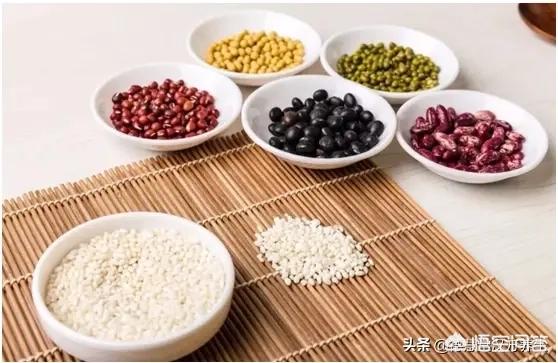
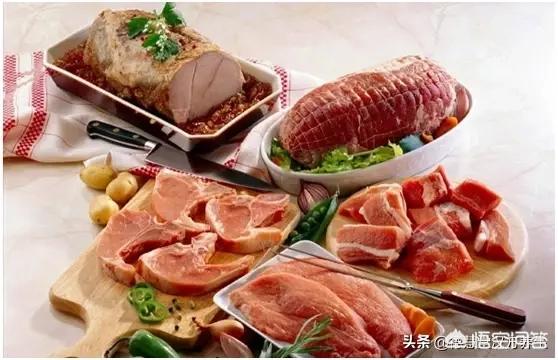
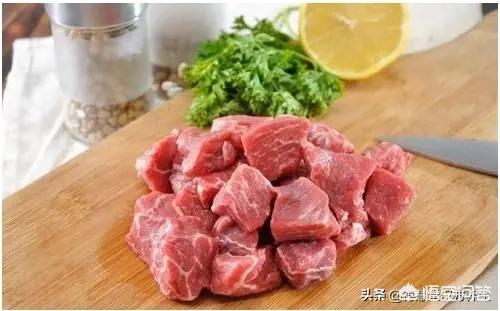
Much!
After years of diabetes, pancreas and insulin function have been impaired, and potatoes are still a high-carb vegetable.
For every 100 grams of potatoes, there are 79.8 grams of water and 77 kcal - the water is absorbed after steaming, the weight increases, and the calorie content decreases further.
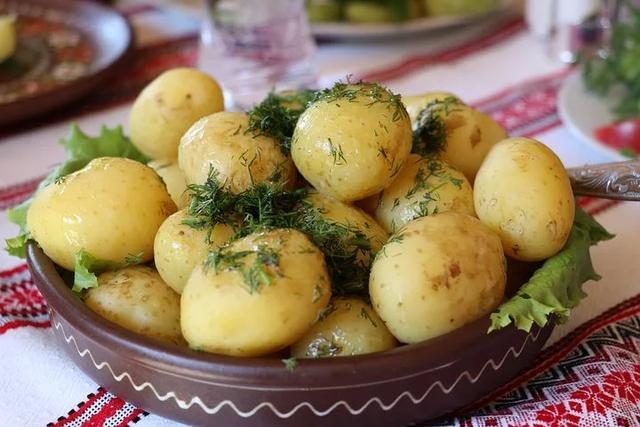
The glycemic index of boiled potatoes is 66.4, and carbohydrates are still calculated at 17.2% of raw weight, which gives a glycemic load of 100 grams of potatoes:
17.2*66.4/100=11.42.
Whether compared with fine rice and noodles, or coarse grains such as oats, buckwheat, millet, etc., this value is certainly not too high. If eaten in moderation, with hypoglycemic medication, it is not too high after a meal.
The only problem, is that it's too much to consume at one time.
Staple food is not to eat, otherwise persistent, will lead to "ketoacidosis" consequences.
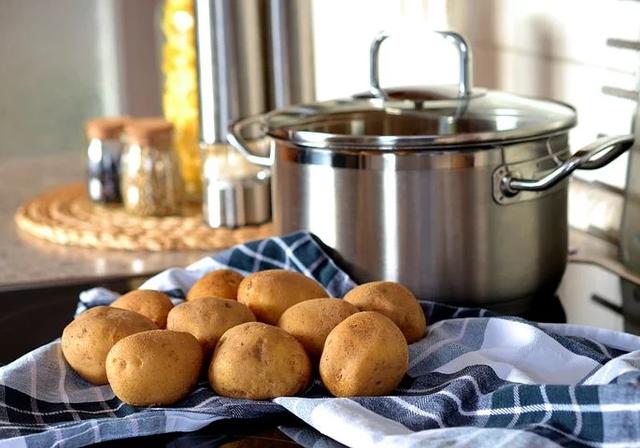
You can't eat too many staple foods, either, as one will overshoot the blood sugar level after a meal, and the other will be overweight, which in turn will make it harder to control blood sugar again.
Nutrition experts recommend consuming at least 130-150 grams of rice and pasta staples (raw weight, containing between 95-115 grams of carbohydrates) per day.
If you switch to potatoes, it is between 550-650 grams. Distribute three meals a day as follows:
100-150 grams for breakfast, 200-300 grams for lunch, and 150-200 grams for dinner (a variety of different staple foods is recommended).
Compared to other staple foods, potatoes are high in potassium and low in sodium, making them ideal for people with high blood pressure and weight loss; they contain vitamin C, which is not found in refined rice and noodles and general coarse grains.
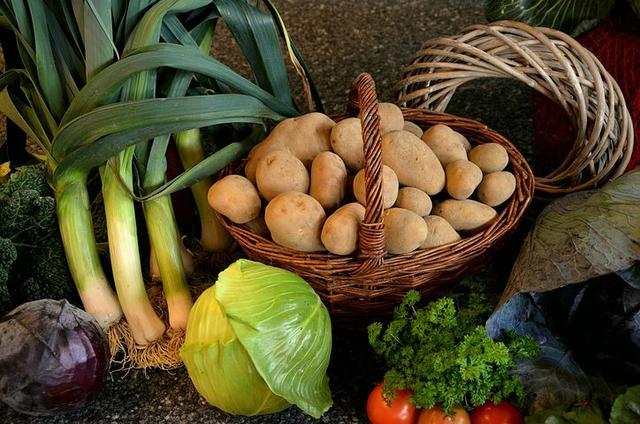
Research has confirmed that regular consumption of high potassium food, can effectively reduce the incidence of stroke; potatoes, containing mucus protein with special protective effect on the human body, can maintain the health of the digestive tract, respiratory tract, help to maintain the elasticity of blood vessels and prevent atherosclerosis.
Sprouted and green potatoes, which contain the toxin lobelia, should not be eaten.
Research has found that potatoes steamed, can maximize the retention of nutrients; will also make the starch particles fully activated, easier to be digested and absorbed by the body.
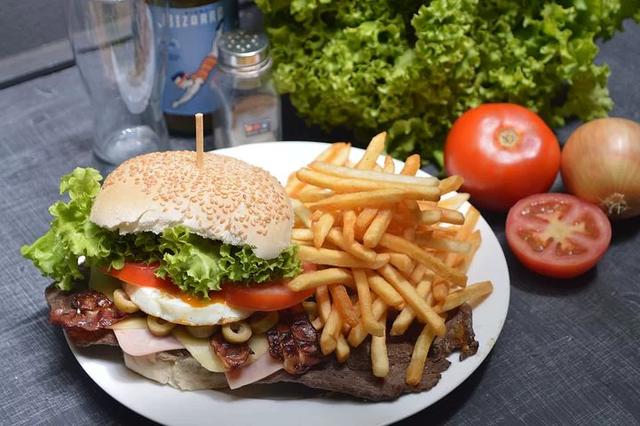
It is not recommended for people with high blood sugar, to consume foods such as mashed potatoes, French fries, fried potato chips, and mashed potato gumbo.
Sugar Lovers Recipe Example:
Breakfast Boil one corn + xylitol soy milk + sauteed cabbage.
Lunch Oatmeal (a small bowl of 300g) + steamed potatoes (100g) stir-fried beef with chili peppers + steamed egg + cold triple shredded.
Dinner Small rice and sweet potato porridge (400g) + steamed sea bass with mushrooms + stir-fried celery and red bean lily.
After the diet, blood glucose was tested at the same time in order to make timely adjustments to staple foods, vegetables and exercise based on satiety and blood glucose values.
Congratulations to all the sugar lovers for figuring out their good eating patterns and controlling their high blood sugar!
For diabetic patients, how to eat important things, eat too much will easily cause blood sugar spike, too little and easy to hypoglycemia, and for diabetic patients, we need to understand a word: Glycemic index, that is, after eating the degree of blood glucose caused by the elevation of blood glucose, and the different food Glycemic index is different, even if the same kind of food with different practices of Glycemic index is also different. We suggest diabetics to eat foods with low glycemic index.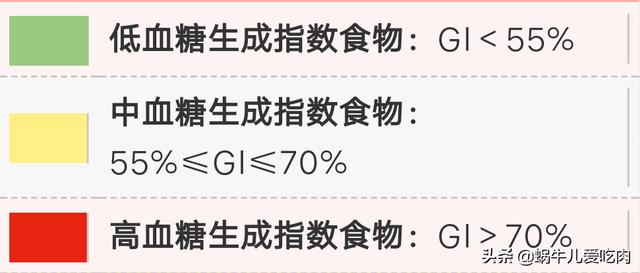
Rice, for example, has a significantly different glycemic index depending on how long it's cooked.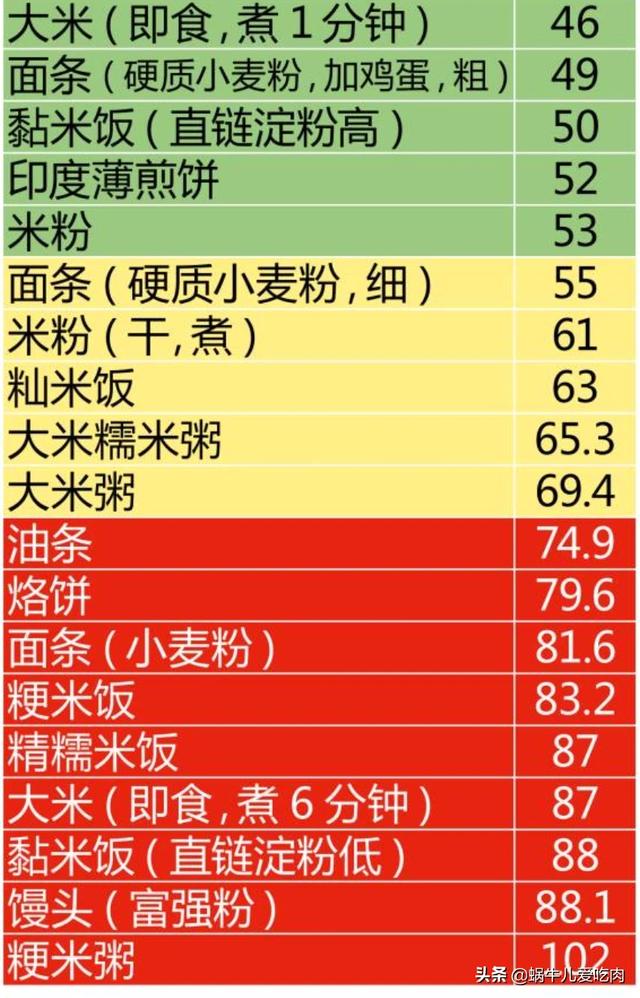
However, as we can see from the graph, the glycemic index of steamed potatoes is not low, so excessive intake of steamed potatoes can also cause an increase in blood glucose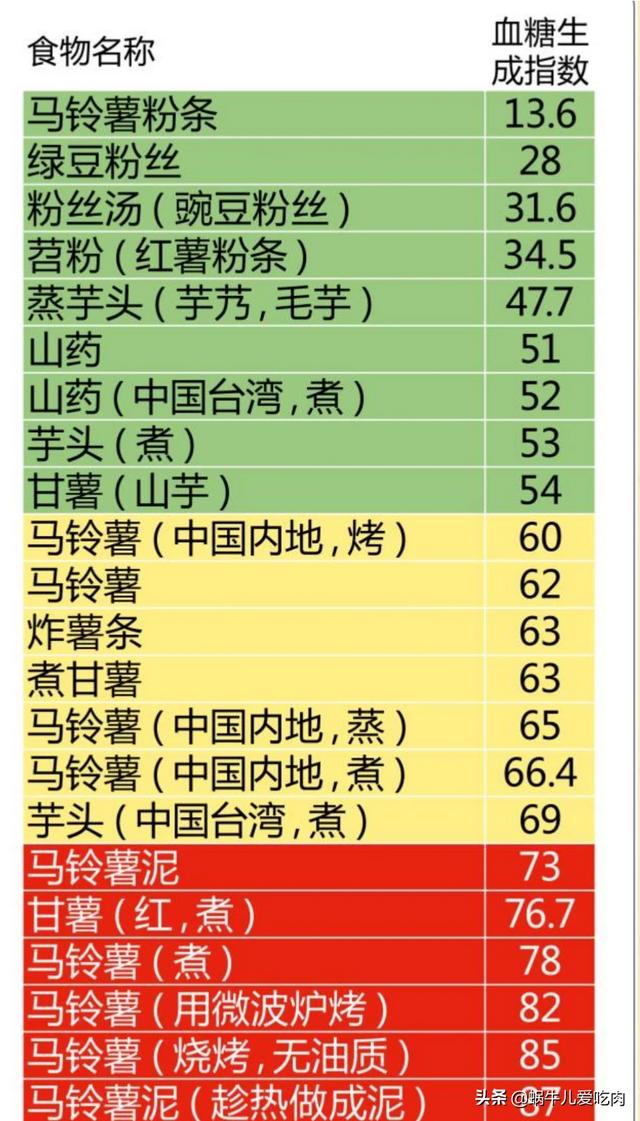
Potatoes are high in starch and not low on the glycemic index, so it's not a good idea to eat a lot of them. It's not a problem to eat one as big as a child's fist. Steamed and eaten cold will be better, but you do not necessarily love to eat.
This is too simple. Because the potato it's main ingredient is starch, and starch is chewed through the mouth. It also turns into maltose. It also elevates the sugar level, so diabetics are not fit to eat potatoes.
[Professional doctor to answer your questions
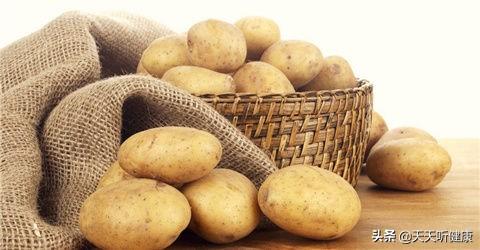 There are several pieces of information that can be seen in this question, one is that you have been diabetic for many years, two is that you have replaced rice with potatoes as a staple, and three is that your blood sugar is still not effectively controlled, and with an understanding of each of these questions, you know why this happens.
There are several pieces of information that can be seen in this question, one is that you have been diabetic for many years, two is that you have replaced rice with potatoes as a staple, and three is that your blood sugar is still not effectively controlled, and with an understanding of each of these questions, you know why this happens.
First of all, diabetes is a progressive disease, which simply means that it becomes more and more difficult to control blood glucose as the disease grows older, why is that? The root cause of diabetes lies in the fact that blood glucose cannot be fully utilized and transformed by the body, resulting in a large amount of blood glucose remaining in the bloodstream, which leads to the occurrence of this process because blood glucose cannot be transported into the cells to be utilized and cannot be transformed into fat to be stored, which is due to the lack of insulin, which is not only a means of transportation for the transportation of blood glucose into the cells, but also a necessary substance for the transformation of the remaining blood glucose into fat. When the insulin-secreting pancreatic islet cells are damaged and their secretion function declines, they do not secrete enough insulin, leading to hyperglycemia.
Once the pancreatic cells are damaged, they will fall into a vicious circle, on the one hand, they do not secrete enough insulin to cause hyperglycemia, on the other hand, hyperglycemia constantly stimulates the pancreatic islet cells to overload the secretion of insulin, which makes the damage to insulin worsening or even death, and once the pancreatic cells are dead, they are not regenerated, and the more and more the secretion of insulin decreases, and the hyperglycemia becomes more and more serious. Therefore, diabetes mellitus is a disease that worsens with the number of years of illness.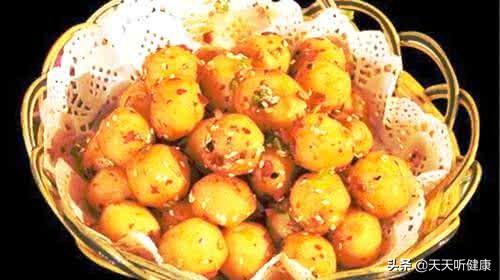
Secondly, the purpose of diabetic dietary control is twofold: one is to reduce the source of blood glucose and control the total amount of blood glucose intake from food, and the other is to minimize the magnitude of postprandial blood glucose elevation and avoid large fluctuations in blood glucose. From this, it can be seen that to achieve such a purpose does not control what food to eat, but to slow down the rate of absorption through a reasonable combination of food, in the same amount of control of the total amount of blood glucose in the organism.
From rice and steamed potatoes, potatoes are not only less than rice contains almost half of the sugar, and is conducive to slow down the digestion and absorption of dietary fiber is also more than rice, in fact, is very suitable for people with diabetes instead of staple food, favorable control of blood glucose and blood glucose fluctuations. If the potato metabolism of rice after blood sugar is still high, can only indicate a problem: the body's ability to use and transform blood sugar continues to decline, suggesting that only rely on dietary control has been unable to effectively control blood sugar, the need for hypoglycemic drugs to help the body to use blood sugar, after all, the human body's physiological activities are based on the full use of blood glucose to complete, the body's physiological activities are to make full use of blood glucose.
To summarize, the problem posed by this friend actually suggests that the treatment plan should be reformulated, and it is necessary to adjust the dosage of hypoglycemic drugs through an increase, coupled with dietary control in order to control blood glucose up to the standard.
I hope this answer can help you, welcome to click on the attention and leave a message, together to learn and exchange more health knowledge.
This question and answer are from the site users, does not represent the position of the site, such as infringement, please contact the administrator to delete.